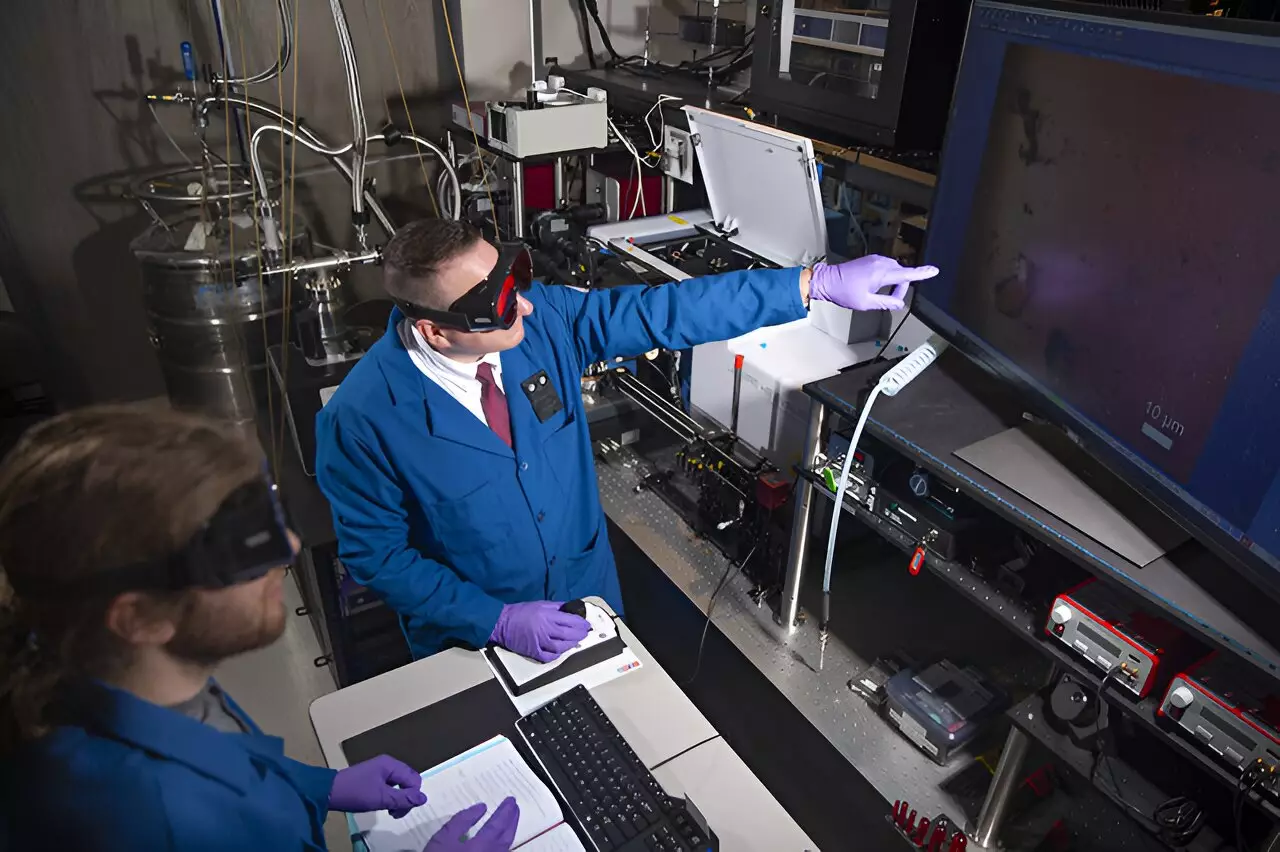In a recent study published in the journal Nature Communications, a research team led by scientists from Los Alamos National Laboratory has made strides in the field of topological phases of matter, opening up possibilities for advancements in quantum devices. By using a unique strain engineering approach, the team successfully transformed hafnium pentatelluride (HfTe5) into a strong topological insulator phase. This breakthrough is significant as it increases the material’s bulk electrical resistance while simultaneously lowering it at the surface, which is crucial for harnessing its quantum potential.
One of the team members, Michael Pettes, who is a scientist with the Center for Integrated Nanotechnologies at Los Alamos National Laboratory, expressed his excitement over the results. He highlights that the topological surface states, which have long been sought-after, can now be transformed into a predominant electrical conduction pathway. This development holds great promise for the advancement of quantum optoelectronic devices, dark matter detectors, topologically protected devices, and even quantum computers. Furthermore, the strain engineering technique employed in this study shows compatibility with other quantum materials, opening up avenues for further experimentation.
The research team collaborated with scientists from the University of California, Irvine, for the growth of HfTe5 crystals. They adopted a strain engineering approach that involved applying mechanical force to the material at extremely low temperatures of 1.5 Kelvin, or approximately minus 457 degrees Fahrenheit. To image the samples at a sub-micron level, optical spectroscopy was performed at Pettes’s CINT laboratory in Los Alamos. Additionally, angle-resolved photoemission spectroscopy conducted by researchers from the University of Tennessee helped shed light on the effects of the strain engineering technique.
The results of the experiments revealed a significant transformation in the behavior of HfTe5 due to strain engineering. The material transitioned from a weak topological insulator to a strong topological insulator. This transformation was evident in the material’s bulk electrical resistivity, which increased by more than three orders of magnitude. Moreover, the topological surface states began to dominate the electronic transport within the material. These properties make HfTe5 an attractive candidate for the development of quantum devices.
The success of the strain engineering approach in transforming HfTe5 opens up new avenues for studying topological phase transitions in van der Waals materials and heterostructures. These lattice-like structures possess a strong in-plane bond and a weak out-of-plane bond among the atoms or molecules, similar to the pages in a book. By conducting experiments with high magnetic fields, researchers hope to uncover phenomena related to exotic physics such as quantum anomalies, which refer to the unexplained breaking of symmetry in physics.
Looking ahead, new experiments are already underway at the Los Alamos National High Magnetic Field Laboratory – Pulsed Field Facility. These experiments subject HfTe5 to strain under ultra-high magnetic fields of up to 65 Tesla. The goal is to further understand the behavior of this topological material and explore its potential applications in the realm of quantum physics.
The recent research on topological phases of matter offers promising advancements in the field of quantum devices. Through the innovative use of strain engineering, the research team has successfully transformed HfTe5 into a strong topological insulator. This breakthrough opens up possibilities for the development of quantum optoelectronic devices, dark matter detectors, and topologically protected devices. Additionally, the compatibility of the strain engineering technique with other quantum materials offers potential for future experimentation and exploration. By pushing the boundaries of scientific knowledge and conducting experiments under high magnetic fields, researchers aim to uncover phenomena related to exotic physics and further understand the behavior of topological materials like HfTe5.


Leave a Reply